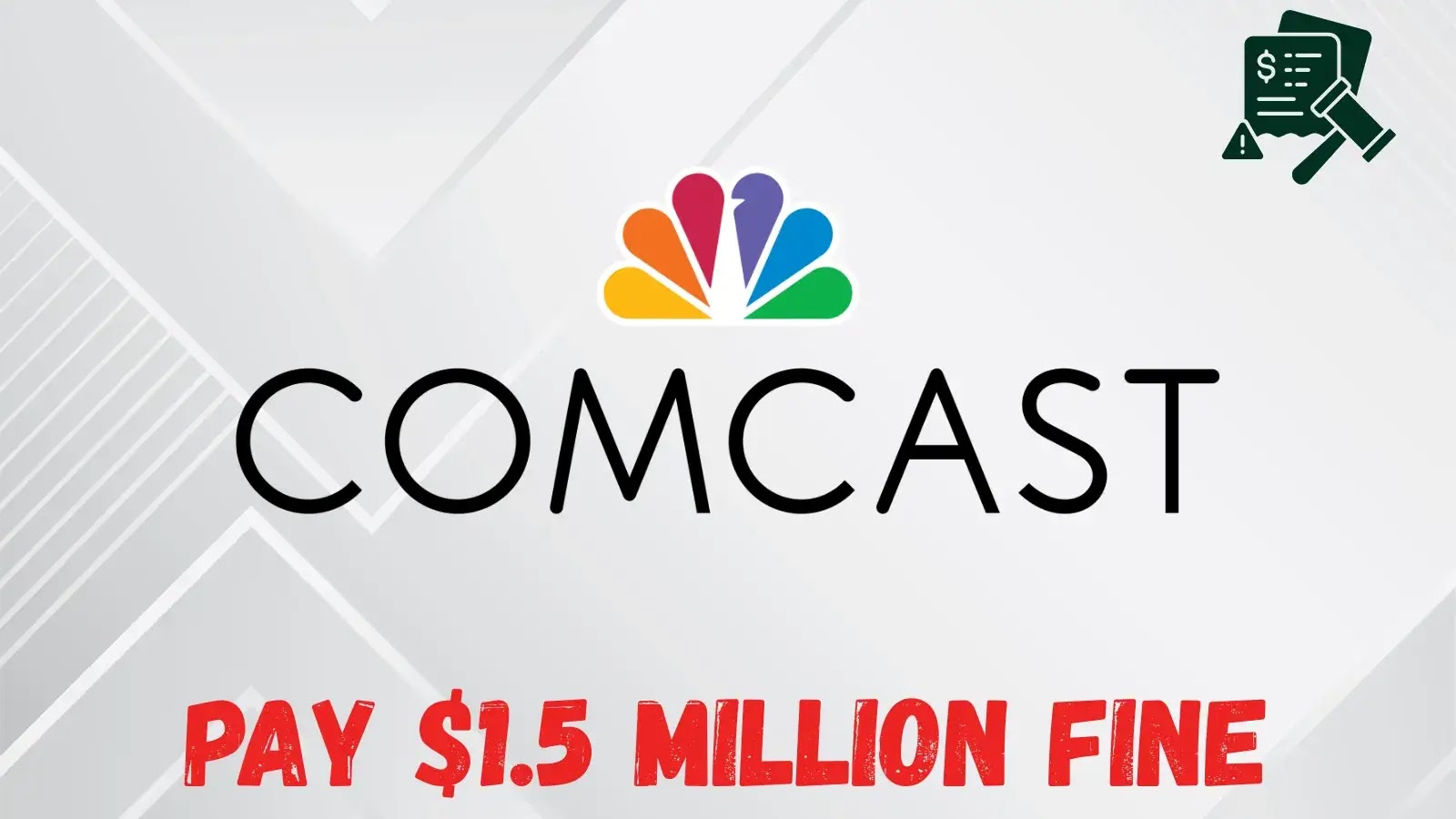
Comcast to Pay a $1.5 Million Fine to Settle an FCC Investigation Linked to Vendor Data Breach
The digital landscape is fraught with perils, and even the most established organizations are not immune. A recent development highlights this stark reality, as Comcast has agreed to pay a substantial $1.5 million fine to settle an FCC investigation. The core of the issue? A significant data breach that exposed the personal information of over 237,000 customers, stemming not directly from Comcast’s internal systems, but from one of its trusted vendors. This incident serves as a potent reminder of the extended attack surface that third-party partnerships introduce and the critical importance of robust vendor risk management.
The Breach: A Vendor’s Misstep, Comcast’s Responsibility
According to reports, the Federal Communications Commission (FCC) announced this settlement, concluding an investigation into how a Comcast vendor mishandled sensitive customer data. While specific details about the vendor’s identity or the precise nature of the mishandling are often kept under wraps in such settlements, the outcome is clear: the breach directly impacted hundreds of thousands of Comcast subscribers. This situation underscores a fundamental truth in cybersecurity: an organization’s security posture is only as strong as its weakest link, whether that link resides internally or within its supply chain.
This type of incident can often be traced back to various vulnerabilities, though in this case the specifics are not publicly disclosed. For instance, common vendor-related breaches stem from lax security practices, insufficient access controls, or a lack of proper data encryption. While no specific CVEs have been publicly associated with this particular incident, past breaches often involve vulnerabilities like unauthorized access due to weak authentication mechanisms (e.g., CVE-2023-XXXXX – *Note: This is a placeholder as no specific CVE was publicly disclosed for this event*), or misconfigured cloud storage buckets, potentially leading to data exposure.
FCC’s Role and Regulatory Impact
The FCC’s involvement in this case highlights the increasing scrutiny regulators are placing on companies, particularly those handling personal data, even when breaches originate with third-party vendors. The fine serves as a punitive measure and a strong deterrent, reinforcing the message that companies are ultimately accountable for the protection of their customers’ data, regardless of where that data resides or who processes it. This regulatory pressure is a key driver for organizations to enhance their cybersecurity frameworks and extend their risk assessments to include all external partners.
The settlement not only involves a monetary penalty but often includes mandates for improved security practices. These can range from enhanced vendor oversight policies to more rigorous internal data protection measures. The goal is to prevent similar incidents from occurring in the future and to foster a culture of heightened security awareness across the entire ecosystem of an organization’s operations.
The Extended Attack Surface: Vendor Risk Management
The Comcast incident is a textbook example of the “extended attack surface” concept. In today’s interconnected business environment, organizations rarely operate in isolation. They rely on a vast network of third-party vendors for everything from payment processing and cloud services to customer support and data analytics. Each of these vendors, and their respective security practices, can introduce potential vulnerabilities that an attacker could exploit.
Effective vendor risk management is no longer a peripheral concern; it is a critical component of an overall cybersecurity strategy. This involves a multi-faceted approach that includes:
- Thorough Due Diligence: Before engaging with a vendor, conducting comprehensive security assessments, including penetration testing reports and compliance certifications.
- Contractual Obligations: Including explicit security requirements, data handling protocols, and breach notification clauses in all vendor contracts.
- Ongoing Monitoring: Regularly assessing vendors’ security postures, performing audits, and reviewing their incident response plans.
- Access Control: Implementing the principle of least privilege, ensuring vendors only have access to the data and systems absolutely necessary for their function.
- Data Minimization: Limiting the amount of sensitive customer data shared with vendors to only what is essential.
Remediation Actions for Organizations
To mitigate the risks illuminated by the Comcast breach, organizations should immediately undertake the following remediation actions:
- Inventory All Third-Party Vendors: Create a comprehensive list of all vendors that have access to sensitive customer data.
- Re-Evaluate Vendor Contracts: Review existing contracts to ensure they contain strong security clauses, breach notification requirements, and liability provisions.
- Implement a Vendor Risk Management Program: Establish a formal program for assessing, monitoring, and managing the cybersecurity risks posed by third-party vendors. This should include regular security questionnaires, audits, and performance reviews.
- Enhance Data Minimization Efforts: Work with vendors to ensure they only collect, process, and store the minimum amount of customer data required for their services.
- Strengthen Internal Oversight: Designate clear roles and responsibilities for managing vendor relationships and overseeing their security compliance.
- Conduct Regular Security Audits: Perform independent security audits and penetration tests on critical vendor systems and data connections.
- Improve Incident Response Planning: Ensure your incident response plan clearly outlines procedures for handling breaches originating with a third-party vendor, including communication strategies and legal obligations.
For organizations looking to gain better visibility into their third-party risk, various tools can assist. While not directly linked to specific vulnerabilities in this case, these tools offer general utility in bolstering vendor security:
| Tool Name | Purpose | Link |
|---|---|---|
| BitSight | Security ratings and vendor risk management | https://www.bitsight.com |
| SecurityScorecard | Cybersecurity ratings and risk assessment | https://securityscorecard.com |
| OneTrust Vendor Risk Management | Comprehensive third-party risk management platform | https://onetrust.com/solutions/third-party-risk-management |
Key Takeaways
The Comcast settlement serves as a critical lesson in modern cybersecurity: the responsibility for protecting customer data extends beyond an organization’s direct control. Companies must proactively manage the risks introduced by their vendor ecosystem. The $1.5 million fine by the FCC underscores the significant financial and reputational consequences of failing to do so. A robust vendor risk management program, coupled with stringent contractual agreements and continuous monitoring, is no longer optional but an absolute necessity in safeguarding sensitive information and maintaining customer trust.





